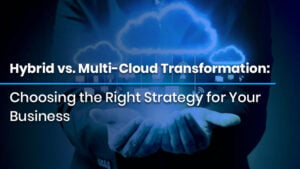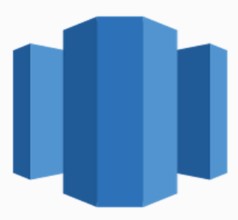
How to Strengthen Security Using CIS Controls and Posture Analysis
How to Strengthen Security Using CIS Controls and Posture Analysis Introduction In the fast-paced and ever-evolving world of cybersecurity, defending digital infrastructure goes far
Enhance your Skills in Cloud Computing , IP Networking , Microsoft , Artificial Intelligence , Cybersecurity and Many More . Come and Join IPSpecialist.

How to Strengthen Security Using CIS Controls and Posture Analysis Introduction In the fast-paced and ever-evolving world of cybersecurity, defending digital infrastructure goes far

How to Prepare for the AWS Data Engineer Exam Introduction With the world becoming increasingly data-driven, organizations are depending on cloud-based systems to store, process,

Hybrid vs. Multi-Cloud Transformation: Choosing the Right Strategy for Your Business Introduction In the digital-first economy of today, cloud transformation is no longer a
Table of Contents
Snowflake and Amazon Redshift are popular cloud-based data warehousing technologies that provide exceptional performance, scalability, and business intelligence.
Their price models, deployment options, and user experience are the main distinctions. This article will cover the differences between AWS Redshift and Snowflake.
Check out our AWS Courses now if you want to start your career in Cloud Computing.
 Snowflake is a data storage and analytics service hosted in the cloud. It has several features, including on-demand scaling, support for numerous data formats, and connection with common business intelligence tools. Snowflake is an excellent choice for enterprises that require a scalable and flexible data storage solution.
Snowflake is a data storage and analytics service hosted in the cloud. It has several features, including on-demand scaling, support for numerous data formats, and connection with common business intelligence tools. Snowflake is an excellent choice for enterprises that require a scalable and flexible data storage solution.
Snowflake is a data storage and analytics service hosted in the cloud. It has several features, including on-demand scaling, support for numerous data formats, and connection with common business intelligence tools. Snowflake is an excellent choice for enterprises that require a scalable and flexible data storage solution.
Snowflake is regarded as the ideal data warehousing solution in the circumstances such as:
Snowflake has a few drawbacks that should be considered before using it. As a proprietary platform, users are confined to the Snowflake ecosystem. Second, because it is a cloud-based service, customers must rely on their internet connection as well as the availability of the Snowflake servers. Finally, it can be costly, especially for firms with a large amount of data to keep and query.
 AWS Redshift is a data warehousing platform that enables large-scale data analysis and storage by utilizing cloud-based compute nodes. The platform uses column-oriented databases to connect business intelligence solutions with SQL-based query engines.
AWS Redshift is a data warehousing platform that enables large-scale data analysis and storage by utilizing cloud-based compute nodes. The platform uses column-oriented databases to connect business intelligence solutions with SQL-based query engines.
Redshift also provides a variety of options for cluster management. These are some examples:
Amazon Redshift is a fully managed warehousing platform that enables businesses to query and integrate petabytes of data while maintaining optimal price performance. The Advanced Query Accelerator (AQUA) provides a cache that speeds up query operations by up to tenfold, allowing organizations to obtain fresh insights from every data point in the application/system.
AWS Redshift is regarded as the ideal data warehousing solution in cases such as:
Businesses should be aware of a few main downsides of using AWS Redshift. For starters, running a Redshift cluster can be costly, especially on a large scale. Second, Redshift is less adaptable than other AWS data services like S3 and DynamoDB. Finally, Redshift can be challenging to maintain and administrate, especially in large-scale deployments.
Data warehousing solutions enable enterprises to store enormous volumes of operational data and make holistic analytical judgments to improve system performance in today’s data-driven world.
Redshift and Snowflake are two leading cloud-based data warehouses that provide robust data management and analytical capabilities.
While both platforms are widely used, and each outperforms the other in terms of benefits, the choice between the two is dictated by business requirements, resources, bundled services, and specialized use cases.
The Snowflake data warehouse is user-friendly, with a straightforward SQL interface that allows for quick setup and operation. Amazon Redshift is reportedly user-friendly and requires very little daily management.
Setup, integration, and query execution are all simple if the customer already stores data on Amazon S3. Redshift also accepts a variety of data output formats, including JSON. Those with a SQL background will find it simple to use PostgreSQL to work with data.
Compared to Snowflake, which automates data vacuuming, compression, diagnostics, and other features, Redshift is a little more difficult and ties up more IT management on maintenance due to a lack of automation.
There is no need to replicate data while scaling up with Snowflake. Amazon does necessitate some copying and other technicalities. Similarly, Snowflake simplifies the process of sharing third-party data and accessing it for analysis. Snowflake supports both structured and semi-structured data types, whereas Redshift does not.
Snowflake makes it simple to transfer data between accounts. For example, if users want to share data with the clients, they may do so without ever having to copy any data.
This is a highly efficient method of interacting with third-party data that has the potential to become the norm across platforms. However, as detailed in our tutorial on third-party data management in Redshift, Redshift does not presently provide the same level of support. Semi-structured data types such as Array, Object, and Variant are not supported by Redshift. However, Snowflake does.
Users are compelled to look at the same cluster and compete for available resources when using Amazon’s Redshift. It would help if one used WLM queues to manage it, which can be difficult given the complicated rules that must be understood and handled.
Snowflake does not have this issue. Users can establish many data warehouses of differing sizes to look at the same data without copying it. As a result, these can be assigned to different people and duties.
Security will be the main focus of all operations for any successful big data initiative. However, since every new data source can potentially expose fresh vulnerabilities, it can take time to manage this consistently. As a result, there may be a discrepancy between newly generated data and data that has been secured.
Along with these capabilities and tools, Redshift also offers sign-in credentials, Cluster encryption, Cluster security groups, data in transit encryption, load encryption, and SSL connections. Redshift allows one to fine-tune access to give users or groups access to only the particular data in tables they require for a given task.
One can start Redshift clusters inside the infrastructure’s Virtual Private Cloud (VPC). This enables users to limit access to the clusters from the inside or outside.
Snowflake also provides similar capabilities and functionalities to guarantee security and regulatory compliance.
The price models for Snowflake ETL and Redshift ETL are extremely different.
Users can access additional discounts that one might otherwise miss out on with one-year or three-year Reserved Instance (RI) pricing. Costs are calculated by Redshift on a per-hour per-node basis.
Therefore, one can determine the monthly obligation as follows:
Redshift Monthly Cost is calculated as follows: [Price per Hour] x [Cluster Size] x [Hours per Month]
The monthly consumption habits have a significant impact on Snowflake’s fees. This is due to the hourly granularity at which each bill is generated for each virtual data warehouse. Costs associated with data storage will be subtracted from computational costs as well.
Both Snowflake and Redshift are good data warehouses for data analysis. Each has advantages and disadvantages. The differences are based on usage patterns, data volumes, workloads, and data strategies.
Amazon is incompatible with transactional processing apps. If the data pattern indicates that there will be constant byte scanning, pricing may spiral out of control. However, when further layers are involved, Snowflake pricing might also climb. If users require the highest degree of functionality and security, Amazon may be a better option.
For some, Redshift’s combination of computing and storage will result in significant cost savings. However, the opposite may be true for other workloads. In such circumstances, Snowflake’s ability to separate computation and storage prices may be advantageous.
JSON storage is another source of distinction. Both are compatible, but Snowflake provides more possibilities. Snowflake is better for those with a lot of JSON traffic and queries.
© 2025 All rights reserved | Privacy Policy | Terms and Conditions | Sitemap | Cookie Policy




